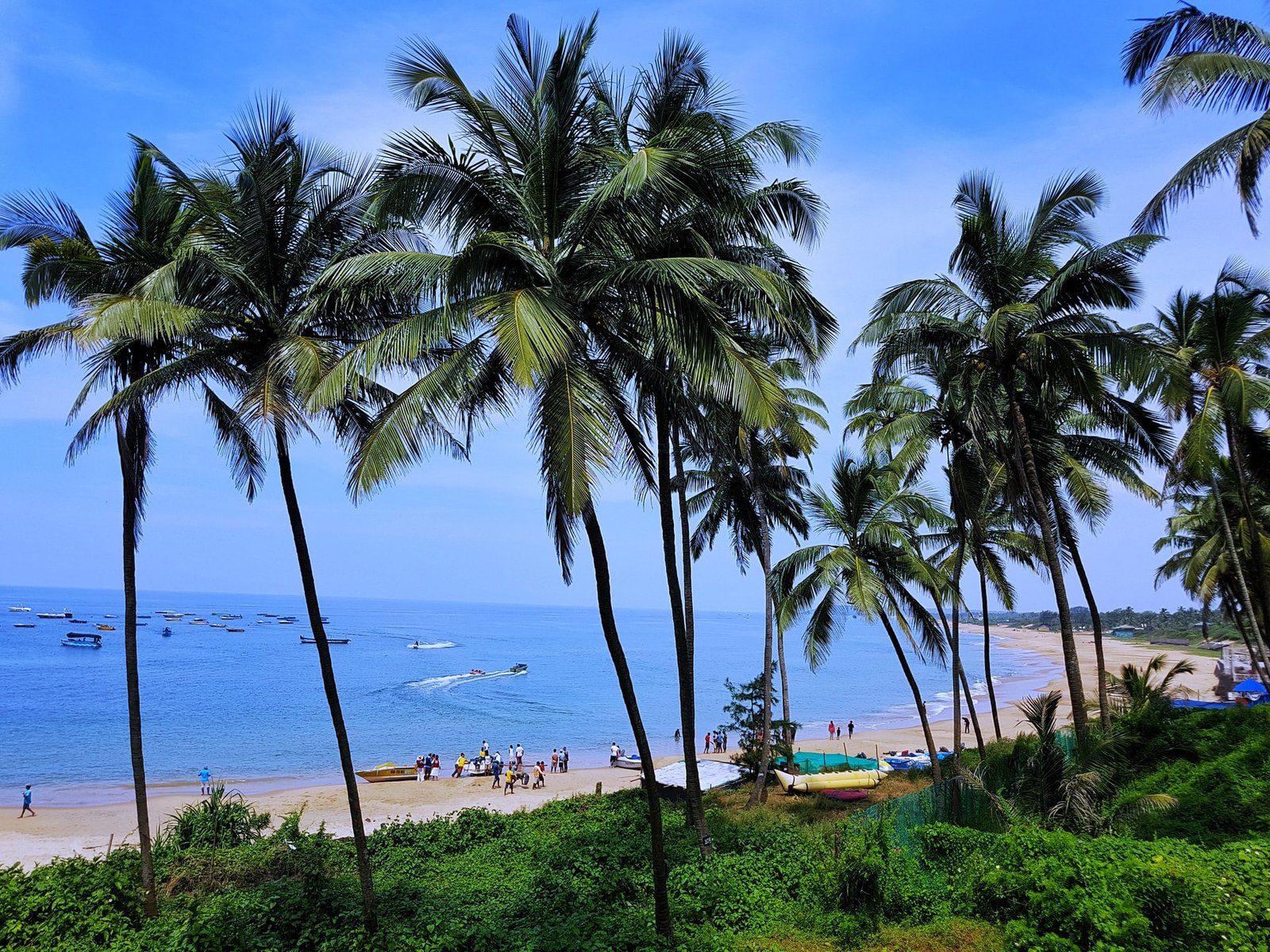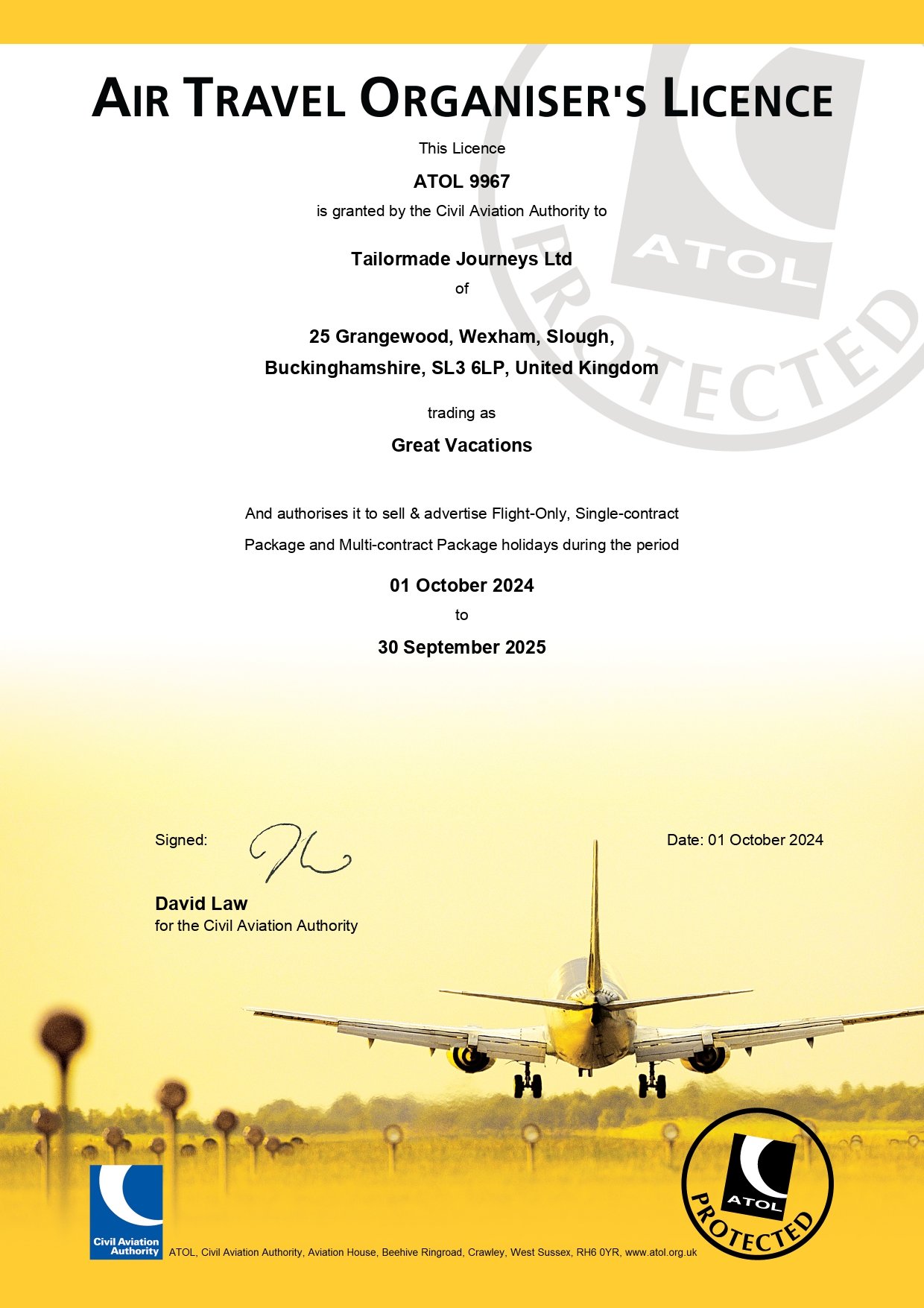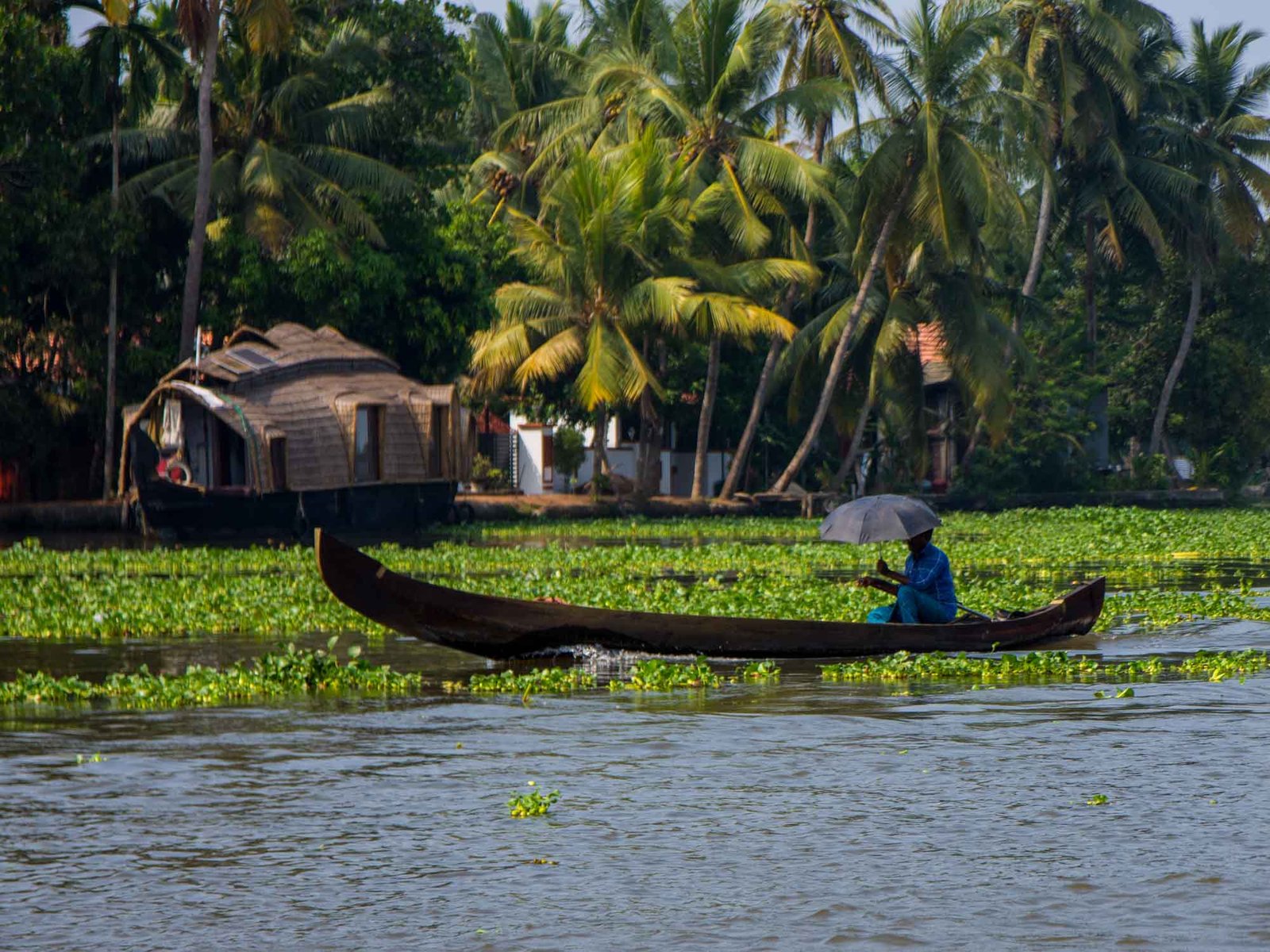
Nestled in the southern part of India, Kerala, often called God’s Own Country, is a place of stunning beauty and rich cultural heritage. This beautiful state is famous for its peaceful backwaters, unspoiled beaches, and lively hill stations. Kerala’s unique culture shines through its food, clothing, art, and dance.
Kerala’s architecture stands out with its beautifully carved temples and traditional wooden homes. The state is also renowned for its literature and art forms like Kathakali and Mohiniyattam, which have earned admiration worldwide. Religion and festivals play a significant role in the daily lives of Kerala’s people, adding to the state’s vibrant cultural tapestry.
In this blog, we will explore the traditions and culture of Kerala. Dive into the delicious food, unique traditions, mesmerizing art, lively festivals, and stunning architecture of this enchanting state.
Savoring the Flavors of Kerala: A Culinary Journey
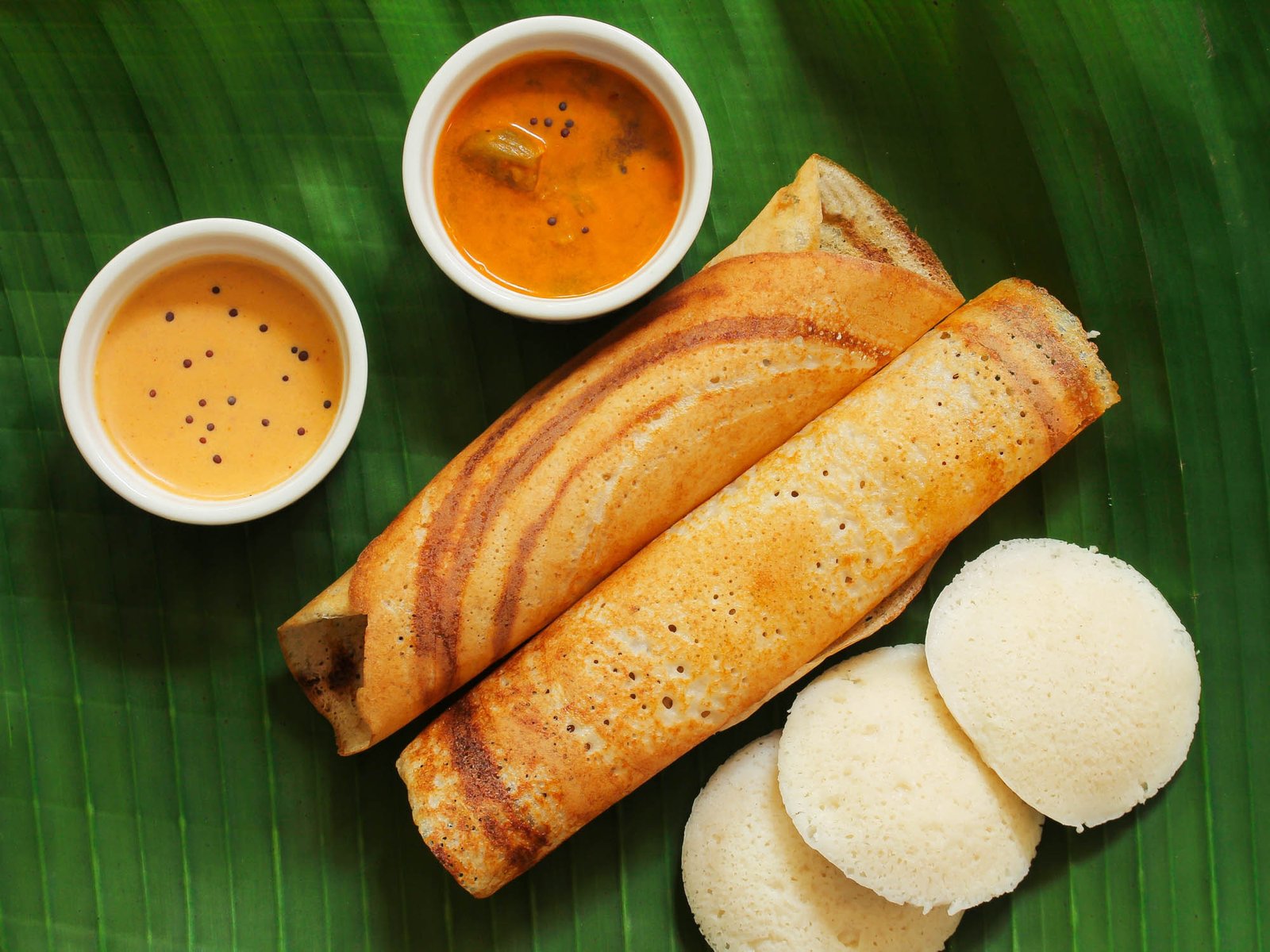
In Kerala, food is an essential part of its rich culture and traditions. The cuisine here is a delightful mix of non-vegetarian and vegetarian dishes, featuring meat, fish, poultry, rice, and vegetables. Coconut, spices, and rice dominate the kitchen, giving Kerala’s food its unique and delicious taste.
Coconut is used in many forms, like coconut oil and coconut milk, adding a distinct flavor to the dishes. Rice, the staple food, is usually the star of every meal, accompanied by an array of mouthwatering side dishes. These side dishes can include vegetable curries and spicy fish or chicken preparations, all bursting with flavor thanks to spices like black pepper, cardamom, and cloves.
One of the culinary highlights of Kerala is the traditional feast known as Sadya. Served on a banana leaf, this vegetarian feast includes a variety of dishes such as sambar, avial, and payasam. The combination of these flavors creates a truly heavenly meal.
Kerala’s long coastline ensures that seafood is a staple, with fresh fish, prawns, and crabs prepared in various styles. It’s a paradise for seafood lovers, offering a burst of flavors in every bite. Kerala’s cuisine is a testament to its rich culinary heritage, making it a true treat for your taste buds.
Clothing Of Kerala
Kerala’s culture is beautifully reflected in the traditional attire of its people, showcasing the state’s rich heritage. For men, the traditional dress is the mundu, a white cloth wrapped around the waist, often paired with a shirt or angavastram. This simple yet elegant attire is a staple in everyday life.
Women in Kerala typically wear sarees, available in a variety of stunning colors and designs. These sarees are paired with a blouse called a choli. On special occasions, both men and women wear more elaborate versions of their traditional clothing. Men choose the Kasavu Mundu, distinguished by its gold borders, while women adorn themselves in the Kasavu saree, also featuring gold embellishments.
These traditional garments are more than just clothing; they are symbols of Kerala’s cultural identity. You’ll see them prominently during festivals and celebrations, adding to the vibrant and festive atmosphere. The attire of Kerala encapsulates the elegance and beauty of its culture, offering a tangible connection to the state’s traditions and heritage.
Exploring the Architectural Wonders of Kerala

Kerala’s architecture is a testament to its rich cultural heritage and natural beauty. One of the most distinctive architectural styles in Kerala is the Nalukettu, a traditional home featuring a central courtyard and wooden structures designed to withstand the heavy monsoon rains. These homes are not only functional but also exude an old-world charm that reflects Kerala’s deep-rooted traditions.
Kerala’s temples are renowned for their stunning architecture, adorned with intricate carvings and sculptures that narrate ancient tales. The gopuram, or entrance tower, of these temples, often features vibrant colors and detailed designs, making them prominent landmarks. These temples are not just places of worship; they are magnificent works of art that showcase the state’s architectural brilliance.
In addition to temples and traditional homes, Kerala boasts impressive palaces, such as the Padmanabhaswamy Temple in Thiruvananthapuram. This temple’s architecture is a marvel, highlighting the state’s artistic excellence.
Kerala’s architecture beautifully blends functionality with aesthetic appeal. Whether you’re visiting a temple, a palace, or a traditional home, you’ll be captivated by the intricate details and timeless charm that define Kerala’s architectural landscape.
Celebrating Kerala’s Vibrant Dance and Music Traditions
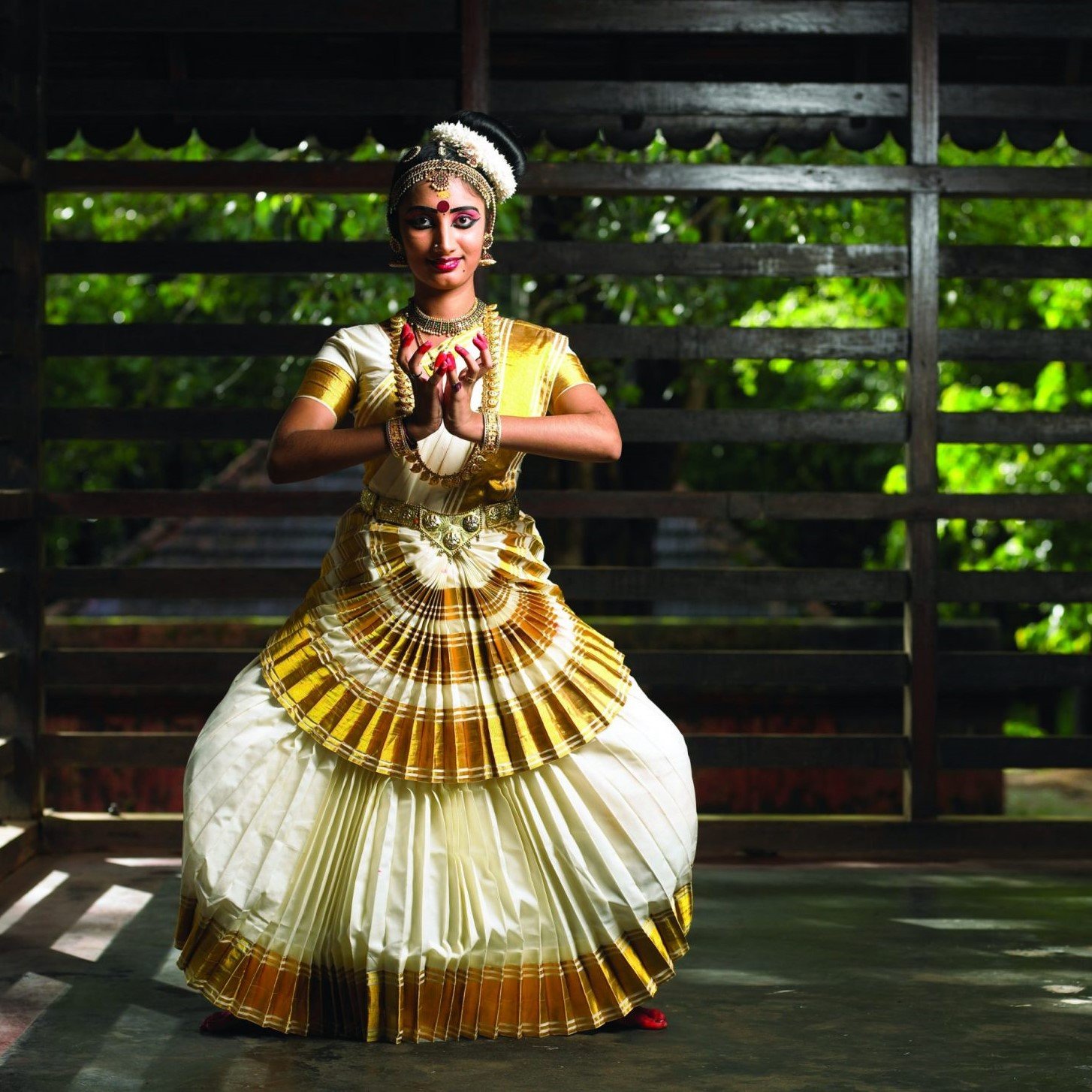
Kerala is renowned for its vibrant folk dance and music traditions, which play a significant role in the cultural life of its people. The state is home to a variety of dance forms that are both captivating and deeply rooted in tradition.
One of the oldest dances is Kanniyar Kali, performed in front of Goddess Bhagavathy. This fast-paced dance is set to devotional folk tunes and is a sight to behold. Another popular dance is Kaikottikali, where women dance in circles during festivals like Thiruvathira and Onam, singing special Thiruvathira songs and gracefully clapping their hands.
Kuthiyottam is well-known in Thiruvananthapuram and is performed in temples in front of the deities. This dance involves four people singing Padapattu and Kalaripattu songs. The Thirayattom dance, performed during the Kavus festival, uses torches to create an exciting visual display. The Kuravas folk in Thiruvananthapuram perform Kakkarissi Kali, a lively dance filled with drumming and enthusiasm.
Dappu Kali is another popular dance that uses an instrument known as the dappu, with dancers switching sides in even numbers. Kolkali is performed by men and women from farming communities, who move in circles, clashing sticks together rhythmically. Kalaripayattu, a swordplay dance, showcases graceful and dynamic movements.
Kathakali is one of the most iconic dance forms of Kerala, resembling a story play where dancers wear elaborate costumes and makeup to narrate tales through their movements and expressions. Music also holds a special place in Kerala’s cultural landscape, with Sopana Sangeetham and Carnatic music being particularly beloved and often heard inside temples.
Other notable dance forms include Ayyappan Vilakku, Parichamuttu Kali, Poorakkali, and Sarpam Thullal, each with its unique charm and cultural significance.
Kerala’s rich tradition of dance and music offers a vibrant tapestry of art forms that continue to enchant and inspire both locals and visitors alike.
Exploring Kerala’s Rich Literary Heritage
Kerala boasts a rich literary heritage that spans centuries, with Malayalam, the native language, serving as the primary medium for literary expression. Early Malayalam literature was rich in poems and songs, known as pattu. A unique form of poetry called Manipravalam, which blends Malayalam and Sanskrit, also thrived during this period.
Ezhuthachan, often regarded as the father of the Malayalam language, made significant contributions to its literature. One of the oldest literary works in Malayalam is the Ramacharitam, composed by Punnathur Kotta. The vibrant world of Ottan Thullal poetry owes much to the renowned poet Kunchan Nambiar.
In modern times, Malayalam literature has been enriched by literary giants like M.T. Vasudevan Nair and O.V. Vijayan. Their works continue to influence and inspire readers and writers alike.
Kerala’s literature is a treasure trove of stories, poems, and epics that have been passed down through generations. These works reflect the cultural and social nuances of the land, offering a deep insight into the heart and soul of Kerala.
Celebrating the Art and Craft of Kerala
Kerala’s art and craft are a testament to the region’s artistic mastery and rich cultural heritage. The state is renowned for its vibrant and intricate art forms, such as Kathakali and Kalamkari paintings, which captivate with their bold colors and detailed designs.
One of the most unique crafts of Kerala is the Aranmula Kannadi, or metal mirrors, handcrafted using a special alloy that provides a distinctive reflective quality. Wood carving is another significant craft, with skilled artisans creating exquisite sculptures and furniture that showcase their craftsmanship.
Kerala is also known for a variety of other crafts, including brass items, Chinese ceramics, tin, bells, and lamps. These items reflect the diverse artistic traditions of the state.
Jewelry in Kerala is predominantly made of gold and holds a special place in its culture. Women often wear long necklaces with thick chains and gold pieces of various shapes and sizes attached. These beautiful pieces are more than just ornaments; they are an important part of Kerala’s tradition and cultural identity.
The art and craft of Kerala are a vibrant reflection of its heritage, showcasing the region’s creativity and skilled craftsmanship. Whether it’s a detailed painting, a handcrafted mirror, or an intricate piece of jewelry, Kerala’s artistic expressions continue to enchant and inspire.
Exploring Kerala’s Rich Art and Culture: Must-Visit Places
If you’re looking to dive into the rich art and culture of Kerala during your trip, here are some popular spots where you can experience the vibrant traditions of this beautiful state:
- Kathakali Centres: Kerala is famous for its classical dance form, Kathakali. Visit Kathakali centres in cities like Kochi and Trivandrum to witness these mesmerizing performances. These centres often offer demonstrations and makeup sessions, providing a deeper understanding of this intricate art form.
- Kerala Folklore Museum, Kochi: Located in Kochi, this museum is a treasure trove of Kerala’s folk art and culture. Explore a vast collection of traditional artifacts, masks, sculptures, and costumes, taking you on a fascinating journey into the heart of Kerala’s heritage.
- Hill Palace, Tripunithura: Situated near Kochi, this historic palace offers insights into the royal heritage of Kerala. It houses an impressive museum with a diverse collection of art, antiques, and artifacts that reflect the state’s cultural richness.
- Mattancherry Palace (Dutch Palace): Located in Fort Kochi, this palace is famous for its exquisite Kerala murals depicting various episodes from the Ramayana. It’s a place where history and art converge, offering a glimpse into Kerala’s past.
- Art Galleries: Kerala boasts several art galleries and cultural centers where you can appreciate both contemporary and traditional art forms. Notable venues include the Durbar Hall Art Gallery in Kochi and the Lalithakala Academy in Thrissur.
- Kerala Kalamandalam, Cheruthuruthy: This renowned institution is a hub for traditional art and culture in Kerala. Attend performances of classical dance and music, and even enroll in courses to learn these art forms.
- Thrissur Pooram: If your visit coincides with this grand festival in Thrissur, you’re in for a cultural extravaganza. Thrissur Pooram is known for its spectacular elephant procession, traditional music, and fireworks, offering a vibrant celebration of Kerala’s culture.
Kerala’s art and culture are woven into the fabric of everyday life. These places provide a gateway to exploring the state’s rich cultural heritage, ensuring a memorable and immersive experience.
Planning Your Trip to Kerala: Essential Information
Now that you’ve explored Kerala’s cultural heritage and identified the key places to experience its traditions and art, it’s time to plan your trip. Before you start, here’s some crucial information to ensure a smooth and enjoyable travel experience.
When to Visit Kerala: A Perfect Winter Escape
The ideal time to visit Kerala is during the winter months, from November to February. The weather is mild and pleasant, making it a perfect escape from the scorching summer heat. During this time, you can revel in the lush green landscapes, relax on beautiful beaches, and immerse yourself in vibrant local festivals.
The cooler temperatures mean you can comfortably explore Kerala’s rich culture, take a serene houseboat ride through the backwaters, and savor the mouthwatering local cuisine without the discomfort of extreme heat or heavy rains.
So, if you’re planning a trip to Kerala, mark your calendar for the winter season. It’s the best time to experience the true essence of this enchanting destination, ensuring your visit is both enjoyable and memorable.
Top Tourist Attractions in Kerala
- Alleppey Backwaters: Take a serene houseboat ride through the backwaters of Alleppey. Experience the mesmerizing blend of water, palm trees, and traditional villages in a tranquil journey that encapsulates Kerala’s natural beauty.
- Munnar Tea Gardens: Munnar is renowned for its picturesque tea gardens. Enjoy breathtaking scenery while strolling through lush plantations and savor some of the finest teas in the region.
- Kochi: Discover the vibrant culture and rich history of Kochi. Visit Fort Kochi to see colonial-era architecture and iconic Chinese fishing nets. Explore attractions like the Dutch Palace and Jewish Synagogue.
- Periyar Wildlife Sanctuary: A must-visit for wildlife enthusiasts, Periyar Wildlife Sanctuary is home to elephants, tigers, and other exotic creatures. Embark on a thrilling safari to observe these majestic animals in their natural habitat.
- Kovalam and Varkala Beaches: Unwind on the pristine beaches of Kovalam and Varkala. Relax on the sandy shores, take a swim, or enjoy water sports for a tranquil escape from city life.
We have provided you with everything you need to know about Kerala’s vibrant culture. To fully immerse yourself in the art and beauty of Kerala, book your Kerala Tour Packages with Tailormade Journey now. Choose from a wide range of options on our website and experience the celebrated culture of Kerala firsthand. So go ahead, plan your trip to Kerala, and create memories that will last a lifetime.




